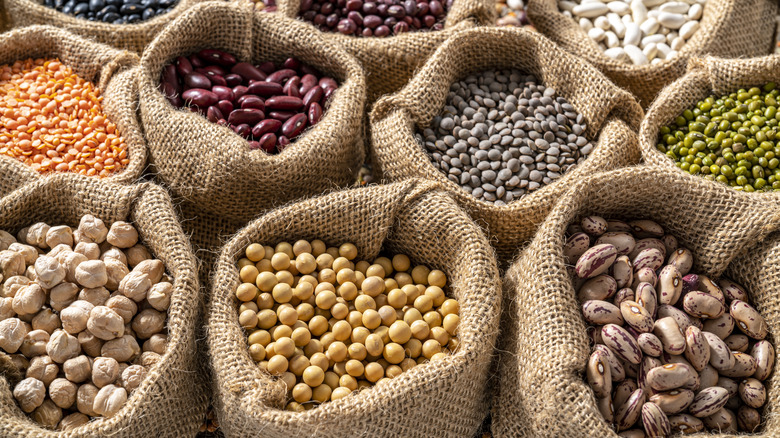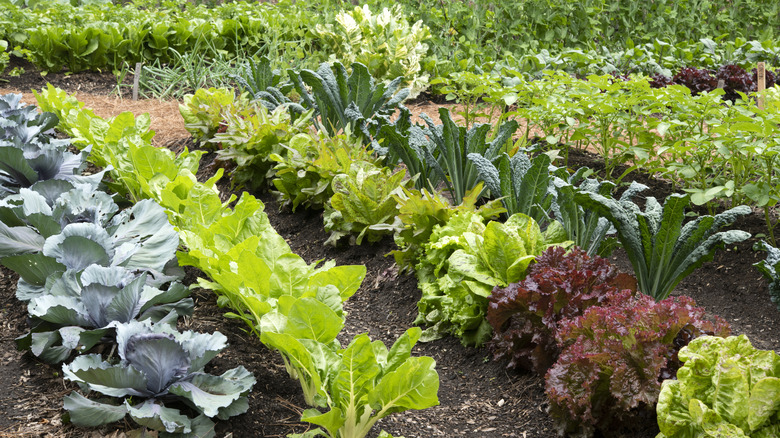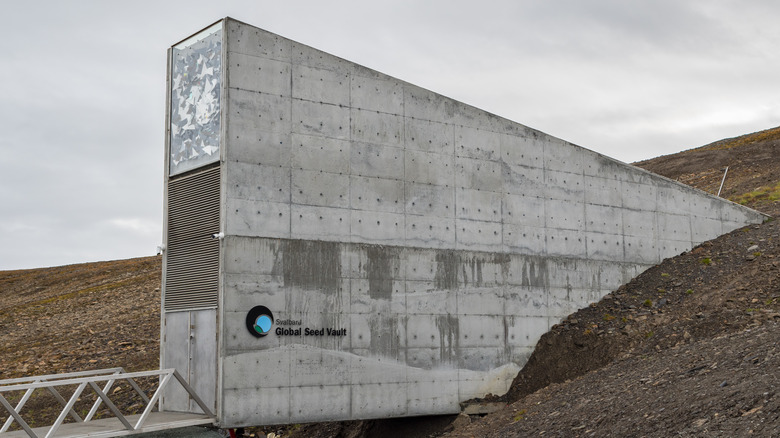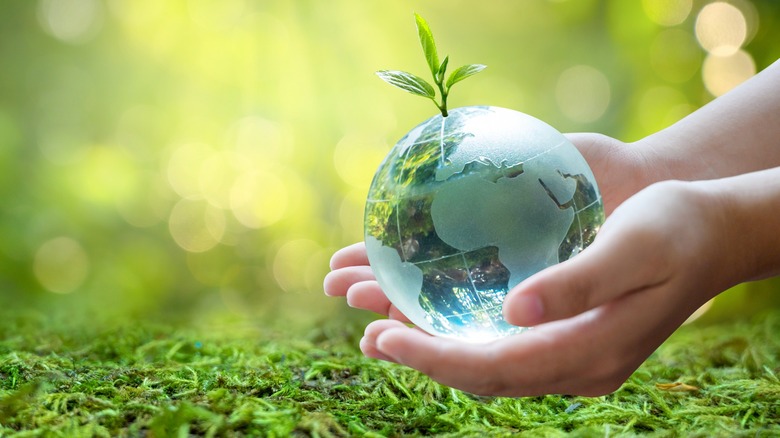The Culinary Practice Of Seed Saving, Explained
The practice of saving seeds is by no means a new concept. People the world over have been cleaning, drying, and carefully storing seeds from their favorite plants for thousands of years. The practice is so important, in fact, that it's likely responsible for the growth of many cultural culinary traditions. Take an American example. Had the Wampanoag people not been in the practice of seed saving and shared their vegetable-growing principles with the English settlers, the Plymouth Colony may well have perished in less than a year. Just imagine how U.S. history would have changed if it weren't for those saved seeds.
It may be difficult to think of seed saving as important in modern life when we can simply buy what we want at the nearest grocery store. However, apart from having historical culinary significance, seed saving has an impact on global food security and climate adaptability as well. Luckily, thanks to initiatives by research institutions, genetic banks, universities, non-profit organizations, and, most importantly, home gardeners, the practice of seed saving is alive and well all across the world.
From the diverse range of vegetables you can grow in your back garden to Arctic global seed vaults to adapting to regional climates, saving seeds is one culinary custom that is worth a deep dive. Let's explore the practice of seed saving and its global implications.
Growing what you want to eat
Seed saving begins at the personal level. If gardeners were not in the practice of saving seeds, there would be no specialty fruit or vegetable varieties available, like those heirloom tomatoes we all love. Why? Because industrial agriculture favors a few types of seeds that provide a uniform, marketable product. Seeds must grow at the same size and rate year after year in order to keep the grocery stores filled, but it can get boring quickly. Thanks to seed saving, gardeners and cooks have access to a diverse collection of produce with different shapes, colors, flavors, and textures.
Many who have been gardening for a long time draw from literal catalogs of heirloom seeds that have been saved throughout generations. If you're just getting started, however, it will take some time to establish your own seed library. The idea is to keep growing the vegetables you like to grow, without having to rely on seed companies to supply you. One tomato plant can carry in excess of 300 seeds, providing you with more than enough for another season's worth of plants.
To efficiently seed a tomato, all you need to do is separate the seeds from the pulp, dry them, and store them in air-tight containers in a place where they will stay dry and cool. You can do this with pretty much any edible plant. Engaging in this practice is the first step of the larger initiative to save seeds for global food stability.
Fostering global food stability
Global food stability is a pressing issue. Just recently, during the height of the COVID-19 pandemic, many people were facing the prospect of food insecurity. It only takes a singular event to disrupt local food systems and supply chains. This is where seed saving comes into play on a global scale.
Across the world, there are facilities known as seed banks or genetic banks. The most famous of these is the Svalbard Global Seed Vault (pictured). It's nicknamed "The Doomsday Vault" and is located 800 miles south of the North Pole in Svalbard, Norway. Its aim is to hold onto an enormous pool of diverse seeds from around the world. Countries deposit native seeds into the bank and withdraw them as needed. It's like a capital insurance policy, one that has the potential to literally replant the earth if necessary.
Consider this fact. Of the tens of thousands of edible plants in the world, just three — corn, rice, and wheat — make up around two-thirds of all the food we eat. Say all three were to suddenly stop growing. Isn't it nice to know that there are places where other types of produce have been saved to deal with an event of this scale? The beauty of seed vaults is that they take what you do with your garden tomatoes at home and multiply it by millions. They protect native crops from things like war, famine, and natural disasters.
Adapting to regional climates
Believe it or not, seed saving can help combat climate-related issues — and it all starts at the regional level. The seeds you find on shelves in the grocery store or garden supply store are most likely owned by a small handful of corporate entities and are often genetically modified or treated with any number of different pesticides. Some even rely on chemical fertilizers to grow. In other words, they might not be the best option for your area — so you'll have to cultivate seeds that are.
Regionally-adapted seeds are those that have been saved after at least one successful growing season. Saving seeds each season and allowing them to grow over and over allows a plant's seeds to imprint upon the environment, becoming more attuned to your area's pests, weather, and soil year after year. So, as you continuously save and plant seeds, your garden flourishes because you have helped your plants and their seeds adapt to your specific area.
The more seeds that are allowed to do this, the more diverse local agriculture becomes, and the less dependent people are on corporate agriculture. Seed saving is just one cog in the wheel of the issue of changing climates across the world. It is, however, an important one. Humans need food in order to survive. The more diverse and adaptable the food system is to things like pandemics, war, and climate change, the more there is to cook and eat.



